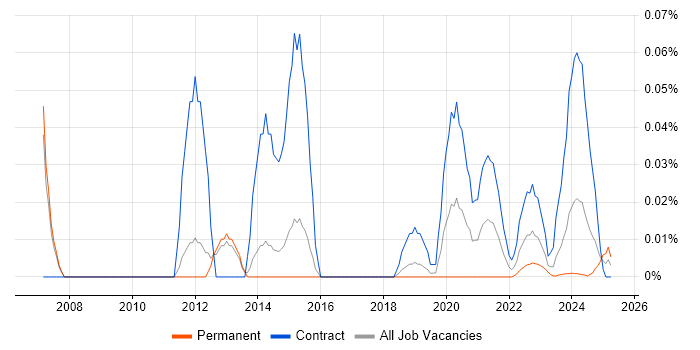Job Entry Subsystem (JES2, JES3)
UK > Work from Home
The table below provides summary statistics for permanent remote or hybrid work requiring Job Entry Subsystem skills. It includes a benchmarking guide to the annual salaries offered in vacancies that cited Job Entry Subsystem over the 6 months leading up to 3 May 2025, comparing them to the same period in the previous two years.
|
|
6 months to
3 May 2025 |
Same period 2024 |
Same period 2023 |
| Rank |
416 |
583 |
676 |
| Rank change year-on-year |
+167 |
+93 |
- |
| Permanent jobs citing Job Entry Subsystem |
1 |
1 |
1 |
| As % of all permanent jobs with a WFH option |
0.007% |
0.003% |
0.002% |
| As % of the System Software category |
0.051% |
0.023% |
0.016% |
| Number of salaries quoted |
0 |
0 |
0 |
| Median annual salary (50th Percentile) |
- |
- |
- |
| UK median annual salary |
- |
- |
£65,000 |
Job Entry Subsystem falls under the System Software category. For comparison with the information above, the following table provides summary statistics for all permanent job vacancies with remote or hybrid options requiring system software skills.
| Permanent vacancies with a requirement for system software skills |
1,958 |
4,357 |
6,347 |
| As % of all permanent jobs with a WFH option |
12.91% |
12.88% |
14.91% |
| Number of salaries quoted |
1,523 |
3,487 |
4,690 |
| 10th Percentile |
£30,550 |
£32,000 |
£31,250 |
| 25th Percentile |
£41,250 |
£41,250 |
£42,500 |
| Median annual salary (50th Percentile) |
£60,000 |
£55,000 |
£60,000 |
| Median % change year-on-year |
+9.09% |
-8.33% |
-4.00% |
| 75th Percentile |
£82,500 |
£71,250 |
£80,000 |
| 90th Percentile |
£115,000 |
£87,200 |
£95,000 |
| UK median annual salary |
£55,000 |
£50,000 |
£55,000 |
| % change year-on-year |
+10.00% |
-9.09% |
-1.51% |

